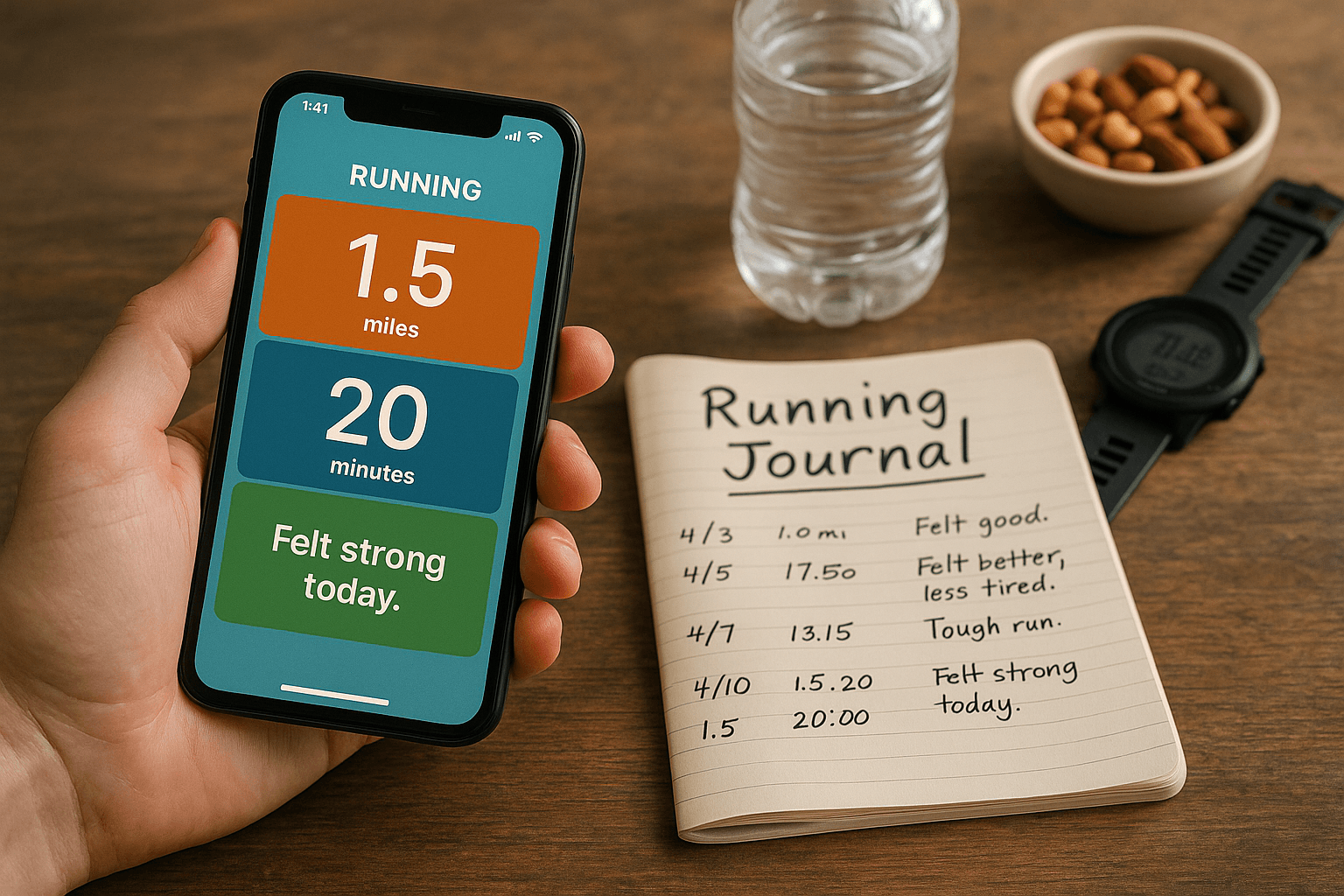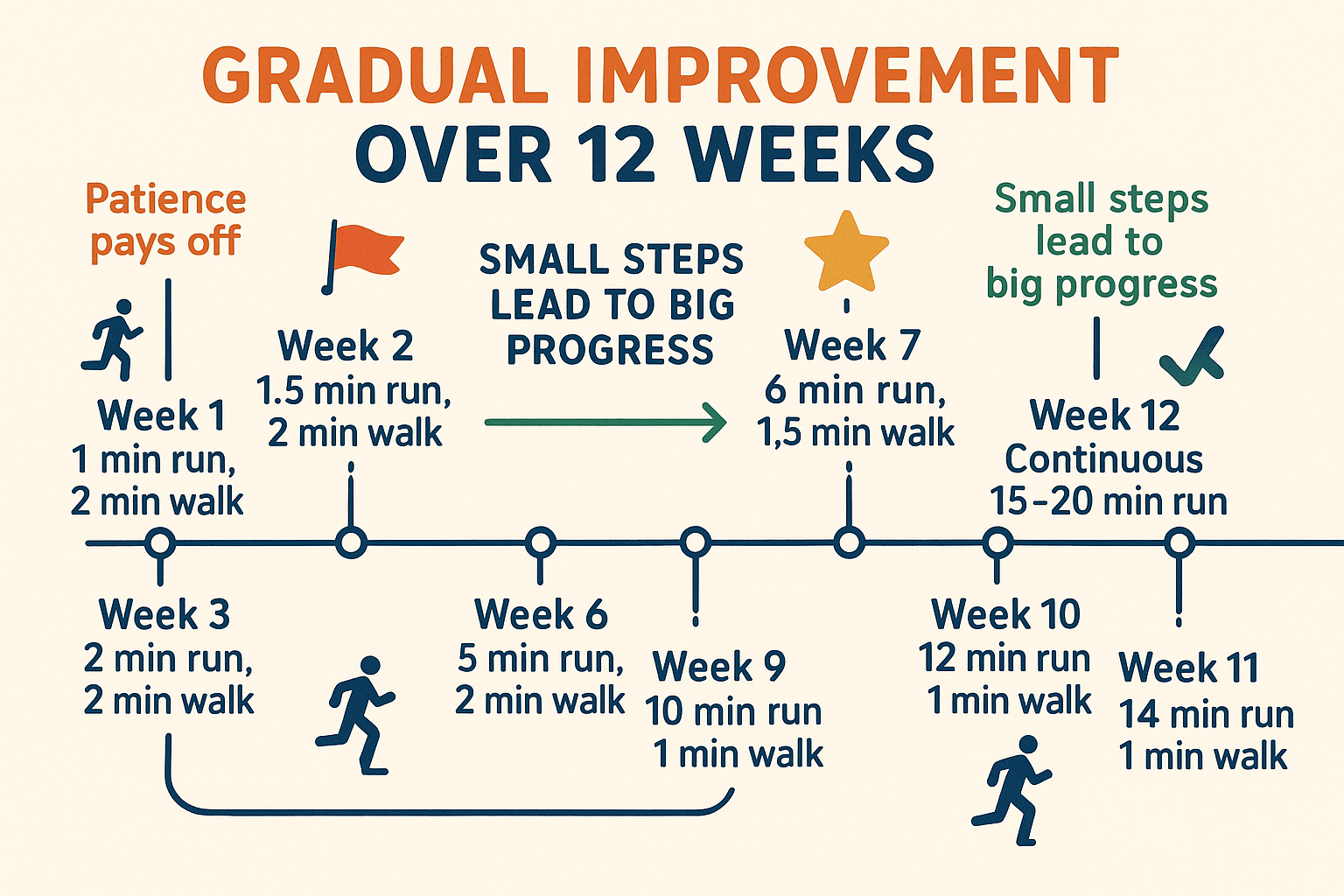Thinking about starting to run but have never exercised before? I get it, it feels overwhelming, but I promise, you can do it.
When I first started—I could barely breathe, and my legs felt like jelly.
It wasn’t easy, but I kept at it.
Running isn’t about being perfect; it’s about getting out there and trying, no matter how tough it feels.
Forget the fancy gear. All you really need is a decent pair of shoes, some determination, and a little patience. Take it step by step, and soon enough, running will become second nature.
I’ll walk you through these steps, share tips for avoiding common beginner mistakes, and give you strategies to push through when things get tough.
Sounds like a good idea? Let’s get to it.
Set a Specific Goal
Let me break it down for you in simple words—saying “I want to run more” won’t get you anywhere.
Let’s set a clear goal you can work towards.
Set a goal that’s clear and easy to do, like “I’ll run for 5 minutes straight by the end of the week.”
Dreaming of running a 5K? Start with a goal like “I’ll run for 10 minutes by next week.”
Specific goals help you stay on track and give you something to focus on.
It’s about doing the work every day, not just hoping for results. Write it down, tell someone, and get started!
Here’s an example: If you want to eventually run a 5K, set your goal for the next week: “I’ll run for 10 minutes straight without stopping.”
Once you hit that, aim for 15 minutes, and so on, until you’re ready for your 5K!
Start Slow
When you’re new to running, take it slow.
Start small, and you’ll gradually build strength.
It’s totally okay if you’re walking more than you’re running at first.
I was there too. When I started, I’d walk in between my runs. I could barely finish a 5K without taking breaks. And guess what? It worked!
Take it slow and steady—you’ll be glad you didn’t rush it. Start with short sessions: 30 seconds of running, then 90 seconds of walking. This is what’s known as the walk/run method. As you get stronger, increase your running time and reduce your walking breaks.
Focus on Building a Routine
Being consistent is key.
At first, you’ll probably feel sore, and that’s totally normal. Stick with it, and soon enough, running will feel easier.
Don’t worry about how fast you’re going—just focus on getting out there and running.
Start with 2–3 runs per week. As your body gets used to it, you can add more. Some days you’ll feel faster than others, and that’s okay! The important thing is that you’re showing up and doing the work.
If you miss a run, don’t stress—just pick up where you left off.
Building a routine is about consistency, not perfection.
Take Care of Your Body
Running can be tough on your body—especially when you’re just getting started.
So, make sure to take care of it.
For starters, stretch pls. It’s one of the simplest things you can do to prevent injury. Do dynamic stretches before running to warm up, and static stretches afterward to cool down.
Good shoes make a big difference. Get a solid pair of running shoes to protect your joints. Your knees will thank you!
Also, don’t skip rest days. If something hurts, take a break. Rest is important for recovery, and you’ll avoid injury that way.
Your body is your biggest asset in running, so make sure to treat it right. Give it the time it needs to recover, and don’t feel guilty about rest.
Embrace the Mental Game
Running is just as much about your mind as it is your body.
On some days, you’ll feel like you can run forever.
Other days, you’ll want to quit after just a few minutes. That’s normal.
When I started, I set small goals to help me keep going, like “I’m just going to run for 3 more minutes, then I can walk.” It helped me stay focused. This mental trick works even when you’re running long races—if it works in an ultra race, it’ll work for your training!
Talking positively to yourself really helps. When things get tough, remember why you started and remind yourself: “I chose this. I can do this.”
Track and Celebrate
Tracking your progress is important. Write down how far you ran, how long you ran, and how you felt afterward. When you look back, you’ll see just how far you’ve come.
Sometimes it might feel like you’re not improving, but when you check the numbers, you’ll see that you really are.
Celebrate every win, big or small.
Whether it’s running an extra minute or just showing up, you’re making progress!
Take a moment to reflect on how far you’ve come each week. Tracking your progress doesn’t just show you the distance you’ve run—it reminds you of the effort and consistency you’re putting in.
Don’t Compare Yourself to Others
Don’t compare yourself to others—it’s your journey, and that’s what matters.
I hate to sound cliche and all but comparison is the thief of joy – don’t let it ruin your plans. A recent coaching client of mine felt down because it took them more than 40 minutes to finish their first 5K. But you know what? They still finished, and that’s the real win.
Focus on your time, your distance, and don’t worry about anyone else’s. Whether it takes you 20 minutes or 48 minutes, you’re a runner.
12-Week Beginner Running Plan For Beginners
Let’s get to more practical stuff. This is how you should break up your training to become a runner ASAP.
Weeks 1-4: Establishing the Foundation
Goal: Build consistency with the run/walk method. Start slow and focus on getting your body used to running regularly.
Key Focus: 2–3 runs per week, starting with short run/walk intervals.
Week 1:
- Run/Walk: 1 min running, 2 mins walking (Repeat for 10–15 minutes)
- Days per week: 3
- Example: Run 1 min, walk 2 mins, repeat for 10-15 minutes total.
Week 2:
- Run/Walk: 1 min running, 2 mins walking (Repeat for 15 minutes)
- Days per week: 3
- Increase run time slightly but keep the walking breaks.
Week 3:
- Run/Walk: 1.5 mins running, 2 mins walking (Repeat for 15–20 minutes)
- Days per week: 3
Week 4:
- Run/Walk: 2 mins running, 2 mins walking (Repeat for 20 minutes)
- Days per week: 3
Weeks 5-8: Increasing Stamina
Goal: Gradually increase the running time while maintaining a walk break. Focus on building stamina.
Key Focus: Increase running time while keeping the walk breaks short. You’ll start running for longer periods without walking.
Week 5:
- Run/Walk: 3 mins running, 2 mins walking (Repeat for 20–25 minutes)
- Days per week: 3
Week 6:
- Run/Walk: 4 mins running, 2 mins walking (Repeat for 25–30 minutes)
- Days per week: 3
Week 7:
- Run/Walk: 5 mins running, 2 mins walking (Repeat for 30 minutes)
- Days per week: 3
Week 8:
- Run/Walk: 6 mins running, 1.5 mins walking (Repeat for 30 minutes)
- Days per week: 3
Weeks 9-12: Increasing Distance and Building Endurance
Goal: Move towards continuous running. Start to reduce walking breaks and aim for longer runs.
Key Focus: Start reducing walk breaks and running for longer continuous intervals.
Week 9:
- Run/Walk: 7 mins running, 1.5 mins walking (Repeat for 30–35 minutes)
- Days per week: 3
Week 10:
- Run/Walk: 8 mins running, 1.5 mins walking (Repeat for 35–40 minutes)
- Days per week: 3
Week 11:
- Run/Walk: 10 mins running, 1 min walking (Repeat for 40 minutes)
- Days per week: 3
Week 12:
- Continuous Run: Run for 15 minutes without walking (If you feel comfortable, try to go for 20 minutes)
- Days per week: 3
- Try to run continuously for the entire time. If needed, take a short walking break but aim to reduce this.
Conclusion
Starting from scratch isn’t easy. It’s gonna be tough. But you’re tougher.
Take it one step at a time, stay patient, and stay consistent.
Every run you do—no matter how short—takes you one step closer to who you’re becoming.
So, lace up those shoes, get out there, and just keep moving.
Thank you for stopping by.
Let me know if you need anything.
David D.


